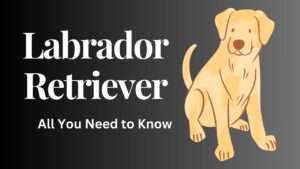In the vast expanse of icy landscapes and snow-capped mountains, roams a breed as majestic as the landscapes they call home: the Siberian Husky. With piercing blue eyes and an undying spirit, these Arctic beauties captivate hearts and minds alike. Join us as we delve into the world of Siberian Huskies, uncovering their fascinating history, unique characteristics, and the joys of welcoming one into your family.
Contents Overview
Breed Overview: Siberian Husky
Size:
- Siberian Huskies are medium-sized dogs, typically standing between 20 to 23.5 inches tall at the shoulder.
- They have a balanced build, appearing neither too heavy nor too light, allowing for agility and endurance.
Appearance:
- Sporting a striking coat, Siberian Huskies come in various colors, including black, gray, red, and sable, often with striking facial markings.
- Their dense double coat helps them withstand frigid temperatures, with a soft undercoat and a thicker, longer outer coat.
Life Span:
- On average, Siberian Huskies have a lifespan of 12 to 14 years, though some may live longer with proper care.
- Regular exercise, a balanced diet, and routine veterinary check-ups contribute to their longevity and overall well-being.
History and Origins of Siberian Husky
The Siberian Husky’s ancestry is steeped in the rich history of the Chukchi people of Siberia, who relied on these dogs for survival in the harsh Arctic conditions. Here’s a glimpse into their fascinating journey through time:
- An Ancient Heritage:
- Originating in Northeast Asia, Siberian Huskies were bred by the nomadic Chukchi people over 3,000 years ago.
- These dogs were vital to the Chukchi’s way of life, serving as sled dogs, companions, and guardians.
- Arctic Expeditions:
- In the early 20th century, Siberian Huskies gained international recognition during the Alaskan gold rush.
- Renowned for their stamina and endurance, they became indispensable for transporting goods and mail across vast frozen landscapes.
- Balto and the Serum Run:
- One of the most famous chapters in Siberian Husky history is the 1925 serum run to Nome, Alaska.
- Led by the courageous Balto and his team, these dogs braved blizzard conditions to deliver life-saving diphtheria antitoxin, earning them everlasting fame.
- Breed Recognition:
- The American Kennel Club officially recognized the Siberian Husky breed in 1930, acknowledging their exceptional traits and contributions.
- Since then, they have become beloved not only as working dogs but also as cherished family pets around the world.
- Modern Day:
- Today, Siberian Huskies continue to enchant with their captivating beauty and unwavering loyalty.
- Whether participating in sled races, agility competitions, or simply lounging at home, these dogs honor their ancient heritage while embracing the joys of modern life.
Temperament and Personality of Siberian Husky
Siberian Huskies possess a distinctive blend of traits that make them both charming and challenging companions. Understanding their temperament is key to nurturing a harmonious relationship:
- Independent Spirit:
- Siberian Huskies are known for their independent nature, stemming from their history as working dogs.
- They may exhibit a stubborn streak and prefer to do things on their terms, requiring patience and consistent training.
- Friendly and Outgoing:
- Despite their wolf-like appearance, Siberian Huskies are generally friendly and sociable dogs.
- They often greet strangers with enthusiasm and are not typically aggressive, making them poor guard dogs but excellent family pets.
- Energetic and Athletic:
- Huskies have boundless energy and thrive on physical activity.
- They excel in activities like running, hiking, and pulling sleds, requiring ample exercise to keep both their bodies and minds stimulated.
- Pack Mentality:
- With their origins in sled teams, Huskies have a strong pack mentality and enjoy the company of other dogs.
- They may exhibit a hierarchy within the household and require clear leadership to prevent behavioral issues.
- Vocal Communicators:
- Siberian Huskies are known for their expressive vocalizations, including howling, barking, and “talking.”
- They use their voices to communicate various needs and emotions, adding to their unique charm but potentially requiring training to manage excessive noise.
- Escape Artists:
- Huskies have a reputation for being skilled escape artists, often due to their wanderlust and curiosity.
- Secure fencing and supervision are essential to prevent them from roaming or getting into mischief.
- Affectionate and Loyal:
- Despite their independent streak, Siberian Huskies form strong bonds with their families and can be affectionate companions.
- They thrive on attention and enjoy being involved in family activities, whether it’s cuddling on the couch or joining outdoor adventures.
Exercise and Training Needs of Siberian Husky
Siberian Huskies are highly active and intelligent dogs that thrive on physical and mental stimulation. Meeting their exercise and training requirements is essential for a happy and well-adjusted companion:
- Regular Exercise:
- Huskies have a high energy level and require ample daily exercise to prevent boredom and destructive behaviors.
- Aim for at least 60-90 minutes of vigorous activity each day, including walks, runs, or engaging in dog sports like agility or obedience training.
- Mental Stimulation:
- In addition to physical exercise, Huskies need mental stimulation to prevent boredom.
- Provide puzzle toys, interactive games, and training sessions to challenge their intellect and keep them engaged.
- Leash Training:
- Due to their strong prey drive and independent nature, Huskies may pull on the leash during walks.
- Consistent leash training from an early age is essential to teach them proper walking manners and ensure safety when out and about.
- Obedience Training:
- Huskies are intelligent but can be stubborn, so early and consistent obedience training is crucial.
- Use positive reinforcement techniques like treats and praise to motivate them and reinforce desired behaviors.
- Socialization:
- Expose Huskies to various people, animals, and environments from a young age to promote good social skills.
- Positive interactions with other dogs, as well as different sights and sounds, help prevent fearfulness and aggression later in life.
- Secure Enclosures:
- Huskies have a strong prey drive and may attempt to escape if left unsupervised in an unsecured area.
- Ensure fences are high and secure to prevent them from digging, jumping, or squeezing through small gaps.
- Consistent Routine:
- Huskies thrive on routine and structure, so establish consistent schedules for feeding, exercise, and training.
- Predictability helps them feel secure and reduces anxiety or unwanted behaviors.
- Patience and Persistence:
- Training a Husky requires patience, consistency, and a positive attitude.
- Be prepared to invest time and effort into their training, understanding that it is an ongoing process that requires reinforcement throughout their lives.
Siberian Husky’s Coat: Type and Length
The Siberian Husky boasts a striking double coat that protects the harsh Arctic climate. Understanding the characteristics of their coat is essential for proper grooming and care:
- Double Coat:
- Siberian Huskies have a double-layered coat consisting of a dense, soft undercoat and a longer, coarser outer coat.
- This double coat serves as insulation, keeping them warm in cold temperatures while also providing some protection against heat.
- Length:
- The length of a Siberian Husky’s coat can vary, but it is typically of medium length.
- The outer coat is longer and more coarse, ranging from 1 to 2 inches in length, while the undercoat is shorter and denser.
- Seasonal Shedding:
- Huskies undergo a process called “blowing coat” twice a year, typically in the spring and fall.
- During this time, they shed their undercoat excessively, often referred to as “blowing their coat,” to prepare for the changing seasons.
- Waterproof and Dirt-Repellent:
- The Siberian Husky’s double coat is not only insulating but also waterproof and dirt-repellent.
- This quality helps keep them dry and clean in wet or muddy conditions, making them well-suited for outdoor activities.
- Grooming Requirements:
- Despite their dense coat, Siberian Huskies are relatively low-maintenance in terms of grooming.
- Regular brushing, especially during shedding seasons, helps remove loose fur and prevent matting or tangling.
- Coat Colors and Markings:
- Siberian Huskies come in a variety of coat colors, including black, gray, red, and sable, often with white markings.
- These markings can range from facial masks to intricate patterns on their bodies, adding to their unique appearance.
Grooming and Care for Siberian Huskies
Siberian Huskies have a beautiful double coat that requires regular grooming and care to keep them healthy and looking their best. Here’s a comprehensive guide to grooming and caring for your Husky:
- Brushing:
- Frequency: Brush your Husky’s coat at least once or twice a week to remove loose fur and prevent matting.
- Tools: Use a slicker brush or undercoat rake to penetrate through the dense fur and remove loose hair efficiently.
- Focus Areas: Pay particular attention to areas prone to matting, such as behind the ears, under the legs, and around the tail.
- Bathing:
- Frequency: Bathe your Husky as needed, typically every 2 to 4 months, or when they become dirty or smelly.
- Shampoo: Use a mild dog shampoo specifically formulated for double-coated breeds to avoid stripping natural oils from their skin.
- Drying: Thoroughly dry your Husky after bathing to prevent dampness, which can lead to skin issues. Use a blow dryer on a low heat setting if necessary.
- Nail Trimming:
- Frequency: Trim your Husky’s nails every 4 to 6 weeks to prevent overgrowth and discomfort.
- Technique: Use a quality pair of dog nail clippers and trim the tips of the nails, being careful to avoid cutting into them quickly, which can cause bleeding and pain.
- Ear Care:
- Frequency: Check your Husky’s ears weekly for signs of dirt, redness, or odor, which may indicate an infection.
- Cleaning: Use a damp cotton ball or pad to gently wipe the outer ear and avoid inserting anything into the ear canal, which can damage the eardrum.
- Dental Hygiene:
- Frequency: Brush your Husky’s teeth daily or at least 2-3 times a week to prevent plaque buildup and maintain oral health.
- Products: Use a dog-specific toothbrush and toothpaste approved by your veterinarian.
- Exercise and Mental Stimulation:
- Physical Activity: Provide ample opportunities for exercise and outdoor play to keep your Husky physically fit and mentally stimulated.
- Mental Stimulation: Engage your Husky in interactive games, puzzle toys, and training sessions to challenge their intellect and prevent boredom.
- Regular Vet Check-ups:
- Schedule regular veterinary check-ups for your Husky to monitor their overall health, vaccinations, and preventive care needs.
- Discuss any concerns or changes in behavior with your vet promptly to address potential health issues early.
Shedding Level of Siberian Husky
Siberian Huskies are notorious shedders, known for their heavy shedding seasons and year-round maintenance. Understanding their shedding patterns and implementing proper grooming techniques can help manage their abundant fur:
- Heavy Shedders:
- Siberian Huskies are considered heavy shedders, particularly during seasonal changes in spring and fall.
- They undergo a process known as “blowing coat,” during which they shed their dense undercoat to make way for a lighter summer coat or a thicker winter coat.
- Year-Round Maintenance:
- While shedding is most noticeable during the blowing coat phases, Huskies shed moderately year-round.
- Regular grooming is necessary to remove loose fur and minimize shedding around the home.
- Grooming Tips:
- Brush your Husky’s coat at least once or twice a week with an undercoat rake or slicker brush to remove loose fur.
- During shedding seasons, daily brushing may be necessary to manage excessive shedding.
- Bathing and Coat Care:
- Bathing your Husky can help remove loose fur and reduce shedding, but it should be done sparingly to avoid stripping natural oils from their skin.
- Use a high-quality dog shampoo formulated for double-coated breeds to maintain coat health.
- Environmental Considerations:
- Regular vacuuming and grooming of furniture and carpets are necessary to manage the fur that Huskies shed around the home.
- Investing in lint rollers and pet hair removal tools can help keep clothing and upholstery free from fur.
- Health Considerations:
- While shedding is a natural process for Huskies, excessive or sudden shedding may indicate underlying health issues such as allergies or hormonal imbalances.
- If you notice abnormal shedding patterns or changes in your Husky’s coat, consult with your veterinarian for proper evaluation and treatment.
- Acceptance and Preparation:
- Owning a Siberian Husky means accepting their shedding tendencies as part of the package.
- Prepare for regular grooming sessions and embrace the inevitable presence of Husky fur in your home as a testament to your love for these beautiful, albeit shedding, companions.
Common Health Issues in Siberian Huskies
While Siberian Huskies are generally healthy and robust dogs, like all breeds, they may be prone to certain health conditions. Being aware of these common issues can help owners recognize symptoms early and provide prompt veterinary care:
- Hip Dysplasia:
- A hereditary condition where the hip joint develops abnormally, leading to pain, lameness, and arthritis.
- Regular exercise, maintaining a healthy weight, and providing joint supplements can help manage symptoms.
- Eye Problems:
- Siberian Huskies are predisposed to several eye conditions, including:
- Cataracts: Clouding of the eye lens, which can impair vision.
- Progressive Retinal Atrophy (PRA): Degeneration of the retina leading to gradual vision loss.
- Corneal Dystrophy: An inherited condition causing cloudiness or opaqueness of the cornea.
- Regular eye exams by a veterinary ophthalmologist are essential for early detection and management.
- Hypothyroidism:
- A thyroid disorder where the thyroid gland fails to produce enough hormones, resulting in metabolic and hormonal imbalances.
- Symptoms include weight gain, lethargy, hair loss, and skin problems.
- Treatment typically involves lifelong medication to regulate hormone levels.
- Dermatological Issues:
- Huskies may be prone to skin conditions such as allergies, dermatitis, and hot spots.
- Environmental allergens, parasites, and food sensitivities can trigger skin problems.
- Maintaining proper grooming and addressing underlying causes with veterinary guidance can help manage dermatological issues.
- Epilepsy:
- Some Siberian Huskies may inherit a genetic predisposition to epilepsy, a neurological disorder characterized by recurrent seizures.
- Seizures can vary in severity and frequency, requiring medication to control symptoms.
- Exercise-Induced Collapse (EIC):
- A condition observed in some Huskies where strenuous exercise triggers weakness, collapse, or even seizures.
- Avoiding excessive or intense physical activity in affected dogs can help prevent episodes.
- Gastric Dilatation-Volvulus (GDV):
- Also known as bloat, GDV is a life-threatening condition where the stomach fills with gas and twists on itself.
- Huskies with deep chests may be at higher risk, and symptoms include restlessness, bloating, and abdominal pain.
- Immediate veterinary intervention is necessary to save the dog’s life.
- Cancer:
- Siberian Huskies may be susceptible to certain types of cancer, including lymphoma and hemangiosarcoma.
- Early detection through routine veterinary exams and screening tests can improve prognosis and treatment outcomes.
Drooling Level of Siberian Husky
Siberian Huskies are not known for excessive drooling compared to some other breeds. However, occasional drooling may occur, especially in certain situations or individuals. Here’s what to expect regarding drooling in Siberian Huskies:
- Occasional Drooling:
- While Siberian Huskies are not typically heavy droolers, occasional drooling may occur, particularly after eating or drinking water.
- Individual Variations:
- Drooling tendencies can vary among individual Huskies. Some may drool more than others due to genetics, dental health, or other factors.
- Triggered by Food or Excitement:
- Huskies may drool in anticipation of meals or treats, especially if they have a particularly tasty snack.
- Excitement or stress, such as during car rides or visits to the veterinarian, may also trigger mild drooling in some Huskies.
- Health Considerations:
- Excessive drooling can sometimes indicate underlying health issues, such as dental problems, oral infections, or gastrointestinal disorders.
- If you notice a sudden increase in drooling or any other concerning symptoms, it’s essential to consult with a veterinarian for proper evaluation and treatment.
- Normal Salivation:
- Like all dogs, Siberian Huskies produce saliva to aid in digestion and maintain oral hygiene. Some degree of drooling is considered normal and healthy.
- Grooming and Dental Care:
- Regular dental care, including brushing your Husky’s teeth and providing dental chews or toys, can help prevent dental issues that may contribute to excessive drooling.
- Proper grooming, including regular brushing and dental check-ups, can also help maintain oral health and reduce drooling.
Nutrition and Diet for Siberian Huskies
Providing proper nutrition is essential for maintaining the health, vitality, and well-being of Siberian Huskies. Here’s a comprehensive guide to their dietary needs:
- Balanced Diet:
- Siberian Huskies thrive on a balanced diet that includes high-quality protein, healthy fats, carbohydrates, vitamins, and minerals.
- Choose a commercial dog food formulated for medium to large breeds or specifically for active dogs.
- Protein:
- Protein is crucial for muscle development and overall health in Huskies.
- Look for dog foods with animal-based protein sources like chicken, turkey, beef, or fish.
- Healthy Fats:
- Healthy fats, such as omega-3 and omega-6 fatty acids, support skin and coat health, joint function, and cognitive development.
- Opt for dog foods containing sources of healthy fats like fish oil, flaxseed, or chicken fat.
- Carbohydrates:
- Carbohydrates provide energy for Huskies’ active lifestyle.
- Choose complex carbohydrates like brown rice, sweet potatoes, or barley to provide sustained energy levels.
- Avoid Fillers and By-products:
- Avoid dog foods containing fillers, artificial preservatives, and low-quality ingredients like corn, wheat, soy, and meat by-products.
- Opt for whole, natural ingredients to ensure your Husky receives optimal nutrition.
- Feeding Schedule:
- Establish a regular feeding schedule with set mealtimes to maintain consistency and prevent overeating.
- Divide the daily recommended amount of food into two or three meals to prevent digestive issues and maintain energy levels throughout the day.
- Monitor Portions:
- Monitor your Husky’s weight and adjust portion sizes accordingly to prevent obesity or undernourishment.
- Follow the feeding guidelines provided on the dog food packaging, but adjust based on your Husky’s activity level, age, and individual metabolism.
- Fresh Water:
- Always provide fresh, clean water for your Husky to drink throughout the day to prevent dehydration and promote overall health.
- Treats and Supplements:
- Limit the use of treats and ensure they are nutritionally balanced and appropriate for your Husky’s dietary needs.
- Consult with your veterinarian before adding supplements to your Husky’s diet to ensure they are necessary and safe.
- Regular Veterinary Check-ups:
- Schedule regular veterinary check-ups to monitor your Husky’s overall health, weight, and nutritional needs.
- Discuss any dietary concerns or changes with your vet to ensure your Husky receives optimal nutrition for their specific requirements.
Living Environment and Housing for Siberian Huskies
Creating a suitable living environment is essential for the health, happiness, and well-being of Siberian Huskies. Here are some key considerations for housing and accommodating these active and independent dogs:
- Space Requirements:
- Siberian Huskies are medium to large-sized dogs that require ample space to move around and exercise.
- Ideally, provide a fenced yard where they can run and play safely. A spacious indoor living area is also necessary, especially during inclement weather.
- Secure Enclosure:
- Huskies are notorious escape artists known for their digging and jumping abilities.
- Ensure that outdoor enclosures are securely fenced with a minimum height of 6 feet, and consider burying the fence or using dig-proof barriers to prevent escape.
- Climate Considerations:
- Siberian Huskies are well-adapted to cold climates but may struggle in hot and humid environments.
- Provide adequate shade, shelter, and access to fresh water during warm weather, and avoid strenuous exercise during the hottest parts of the day.
- Mental Stimulation:
- Huskies are intelligent and active dogs that require mental stimulation to prevent boredom and destructive behaviors.
- Provide interactive toys, and puzzle feeders, and engage in regular training sessions to keep their minds engaged and stimulated.
- Exercise Opportunities:
- Regular exercise is crucial for Huskies to maintain their physical and mental health.
- Plan daily walks, runs, or hikes, and consider engaging in activities like agility, obedience, or sledding to fulfill their need for exercise and stimulation.
- Company and Socialization:
- Huskies are social animals that thrive on companionship and interaction with their human family members.
- Avoid leaving them alone for extended periods, and provide opportunities for socialization with other dogs and people to prevent loneliness and anxiety.
- Comfortable Living Space:
- Provide comfortable bedding and sheltered areas both indoors and outdoors where your Husky can rest and relax.
- Consider providing a designated “den” or crate where they can retreat for privacy and security.
- Regular Veterinary Care:
- Schedule regular veterinary check-ups to monitor your Husky’s health, vaccinations, and preventive care needs.
- Address any health concerns or behavioral issues promptly to ensure their overall well-being.
Barking Level of Siberian Husky
Siberian Huskies are known for their unique vocalizations, which can include howling, “talking,” and occasional barking. Understanding their barking tendencies can help owners manage and address their vocalizations effectively:
- Vocal Communicators:
- Siberian Huskies are highly expressive and vocal dogs that use a variety of sounds to communicate.
- While they may bark on occasion, they are more likely to howl, “talk,” or vocalize in other ways.
- Howling:
- Howling is a natural behavior for Huskies and is deeply ingrained in their genetic makeup.
- They may howl in response to sirens, other dogs’ howls, or as a form of communication with their human family members.
- “Talking”:
- Huskies are known for their unique vocalizations that sound like talking or “woo-wooing.”
- They may use these sounds to express excitement, or frustration, or to engage in communication with their owners.
- Barking:
- While Siberian Huskies are not known to be excessive barkers compared to some other breeds, they may bark occasionally to alert their owners or in response to stimuli.
- Barking may occur in situations such as strangers approaching the home or during play.
- Environmental Factors:
- Environmental factors, such as boredom, loneliness, or lack of exercise, may contribute to increased barking in Huskies.
- Providing ample mental and physical stimulation can help reduce excessive vocalization.
- Training and Management:
- Training and socialization from an early age can help manage barking behavior in Siberian Huskies.
- Positive reinforcement techniques, such as rewarding quiet behavior, can encourage desirable vocalization patterns.
- Acceptance and Understanding:
- Owners need to accept and understand that vocalization is a natural part of the Husky’s behavior.
- While excessive barking may need to be addressed, some level of vocalization is to be expected and embraced as part of their unique charm.
Trainability Level of Siberian Husky
Siberian Huskies are intelligent and independent dogs with a unique temperament that can influence their trainability. Understanding their characteristics and employing effective training methods can lead to successful outcomes:
- Independent Nature:
- Huskies have a strong independent streak, stemming from their history as working sled dogs.
- They may exhibit stubbornness and selective obedience, preferring to do things on their terms.
- Intelligence:
- Siberian Huskies are intelligent dogs capable of learning and problem-solving.
- However, their intelligence may manifest in ways that challenge traditional training methods, requiring creativity and patience from their owners.
- Positive Reinforcement:
- Positive reinforcement techniques, such as treats, praise, and play, are most effective when training Huskies.
- Rewarding desired behaviors encourages them to repeat those behaviors willingly.
- Consistency and Patience:
- Consistency and patience are key when training Siberian Huskies.
- They respond best to clear, predictable routines and gentle guidance rather than harsh discipline.
- Early Socialization:
- Early and extensive socialization is essential for Huskies to develop good manners and positive interactions with people and other animals.
- Exposing them to various environments, sights, sounds, and experiences helps prevent fearfulness and aggression later in life.
- Channeling Energy:
- Huskies have boundless energy and thrive on physical activity.
- Providing outlets for their energy through exercise, play, and training sessions can help channel their energy in constructive ways.
- Focus on Engagement:
- Building a strong bond and relationship with your Husky is crucial for successful training.
- Focus on engaging and interactive training activities that foster teamwork and cooperation.
- Understanding Breed Traits:
- Recognizing and embracing the unique traits and instincts of Siberian Huskies can help tailor training methods to suit their needs.
- Understanding their heritage as sled dogs can provide insight into their behaviors and motivations.
Socialization and Interaction for Siberian Huskies
Socialization is crucial for Siberian Huskies to develop good manners, confidence, and positive relationships with people and other animals. Here’s how to ensure your Husky receives adequate socialization and interaction:
- Early Start:
- Begin socializing your Husky as early as possible, ideally during puppyhood.
- Introduce them to various environments, people, animals, sights, sounds, and experiences to build their confidence and adaptability.
- Puppy Classes:
- Enroll your Husky in puppy socialization classes where they can interact with other puppies in a controlled environment.
- These classes provide opportunities for positive social experiences and teach basic obedience skills.
- Positive Experiences:
- Ensure that all social interactions are positive and rewarding for your Husky.
- Use treats, praise, and play to reinforce good behavior and make socialization enjoyable.
- Exposure to Different People:
- Introduce your Husky to people of all ages, genders, and ethnicities to prevent fearfulness or aggression towards specific groups.
- Encourage gentle handling and interaction with strangers to build trust and confidence.
- Interaction with Other Dogs:
- Allow your Husky to interact with well-behaved and vaccinated dogs in safe environments, such as dog parks or playdates with friends’ dogs.
- Supervise their interactions to prevent conflicts and ensure positive socialization experiences.
- Controlled Meetings:
- Gradually expose your Husky to new situations and stimuli at their own pace.
- Use controlled introductions and gradual desensitization techniques to prevent overwhelming them.
- Exposure to Different Environments:
- Take your Husky on regular outings to expose them to various environments, such as parks, beaches, busy streets, and public transportation.
- Experiencing different sights, sounds, and smells helps desensitize them to new stimuli and builds confidence.
- Continued Socialization:
- Socialization is an ongoing process that should continue throughout your Husky’s life.
- Regularly expose them to new experiences and reinforce positive social behaviors to maintain their social skills.
- Supervision and Safety:
- Always supervise your Husky during socialization activities to ensure their safety and prevent negative experiences.
- Advocate for your dog and intervene if they become uncomfortable or overwhelmed in any situation.
Choosing a Responsible Breeder or Rescue Organization for Siberian Huskies
When adding a Siberian Husky to your family, whether through a breeder or a rescue organization, it’s essential to choose a reputable source that prioritizes the health and well-being of the dogs. Here’s how to identify and select a responsible breeder or rescue organization:
- Research:
- Conduct thorough research to identify breeders or rescue organizations with a good reputation and track record of ethical practices.
- Seek recommendations from trusted sources, such as breed clubs, veterinarians, or other Husky owners.
- Health Testing:
- Responsible breeders conduct health screenings for genetic disorders common in Siberian Huskies, such as hip dysplasia, eye problems, and autoimmune diseases.
- Ask breeders for health clearances for both the puppy’s parents and inquire about the health history of previous litters.
- Breeding Standards:
- Reputable breeders adhere to breed standards set by kennel clubs and breed organizations.
- They prioritize traits like temperament, health, and conformation in their breeding programs and strive to produce healthy, well-rounded puppies.
- Socialization and Care:
- Responsible breeders prioritize the socialization and care of their puppies from birth.
- Puppies should be raised in a clean, stimulating environment and exposed to various sights, sounds, and experiences to promote confident and well-adjusted behavior.
- Transparency and Communication:
- A reputable breeder or rescue organization should be transparent and open to answering questions about their practices, policies, and the dogs in their care.
- They should provide documentation, including health records, contracts, and pedigree information, upon request.
- Home Visit:
- If possible, arrange to visit the breeder’s facilities or the foster home of rescue dogs to assess the living conditions and meet the dogs in person.
- Observe the temperament and behavior of the dogs and ensure they appear healthy cared for.
- Adoption Process:
- Rescue organizations should have a thorough adoption process that includes screening potential adopters, conducting home visits, and providing support and guidance throughout the adoption journey.
- They should prioritize the best interests of the dog and ensure compatibility with the adopter’s lifestyle and circumstances.
- Commitment to Responsible Ownership:
- Choose a breeder or rescue organization that demonstrates a commitment to responsible dog ownership and offers guidance and support beyond the initial transaction.
- They should be available to answer questions, provide advice, and offer assistance throughout the lifetime of the dog.
Adoption Considerations for Siberian Huskies
Adopting a Siberian Husky can be a rewarding experience, but it’s essential to consider several factors before making this commitment. Here are key considerations for prospective adopters:
- Exercise and Activity Needs:
- Siberian Huskies are active and energetic dogs that require plenty of exercise and mental stimulation.
- Ensure you can provide daily opportunities for walks, runs, and engaging activities to meet their physical and mental needs.
- Grooming Requirements:
- Huskies have a double coat that sheds heavily, especially during shedding seasons.
- Be prepared for regular grooming sessions to manage shedding and prevent matting, which may include brushing several times a week.
- Independent Nature:
- Siberian Huskies are known for their independent streak and may exhibit stubbornness in training.
- Understand and accept their independent nature, and be patient and consistent with training and behavior management.
- Socialization and Training:
- Early socialization is crucial for Huskies to develop good manners and positive relationships with people and other animals.
- Commit to ongoing training and reinforcement to ensure your Husky becomes a well-behaved and well-adjusted companion.
- Escape Artists:
- Huskies are notorious escape artists known for their digging and jumping abilities.
- Secure your yard with a high and sturdy fence, and supervise outdoor activities to prevent escape attempts.
- Breed-Specific Health Considerations:
- Siberian Huskies may be prone to certain health issues, including hip dysplasia, eye problems, and skin conditions.
- Be prepared for potential veterinary expenses and commit to providing necessary healthcare and preventive measures.
- Time and Commitment:
- Adopting a Siberian Husky is a long-term commitment that requires time, energy, and dedication.
- Consider your lifestyle, schedule, and ability to provide for the dog’s needs before deciding to adopt.
- Adoption Process and Requirements:
- Research and select a reputable rescue organization that prioritizes the welfare of the dogs and screens potential adopters.
- Be prepared to undergo an adoption process that may include an application, interview, home visit, and adoption fee.
- Compatibility and Lifestyle:
- Ensure that a Siberian Husky is the right fit for your lifestyle, living situation, and family dynamic.
- Consider factors such as allergies, existing pets, and the presence of children in the household when assessing compatibility.
- Rescue and Adoption Resources:
- Explore reputable rescue organizations and shelters specializing in Siberian Huskies, and inquire about available dogs for adoption.
- Consider fostering or volunteering with rescue groups to gain experience and assess whether a Husky is the right fit for your home.
Compatibility with Children and Other Pets - Siberian Husky
Siberian Huskies can be wonderful family pets when properly socialized and trained, but it’s essential to consider their temperament and needs when introducing them to children and other pets. Here’s what to keep in mind:
- Temperament:
- Siberian Huskies are known for their friendly and outgoing nature, making them generally well-suited for households with children.
- They are affectionate and playful, often forming strong bonds with family members, including children.
- Energetic Playmates:
- Huskies have high energy levels and enjoy active play, making them excellent companions for children who enjoy outdoor activities and games.
- Supervise interactions between Huskies and young children to ensure both parties are gentle and respectful.
- Supervision and Training:
- Teach children how to interact safely and respectfully with the Husky, including gentle petting and appropriate play.
- Supervise all interactions between Huskies and young children, especially during feeding or when the dog is resting.
- Socialization:
- Proper socialization from an early age is crucial for Huskies to develop good manners and positive relationships with children and other pets.
- Expose them to children of different ages and temperaments to ensure they are comfortable and well-adjusted.
- Patience and Understanding:
- Huskies may have a high prey drive, which can pose a challenge when introducing them to smaller pets like cats or small dogs.
- Introduce them gradually and under controlled circumstances, and supervise their interactions until you are confident they can coexist peacefully.
- Training and Boundaries:
- Establish clear boundaries and rules for both children and Huskies to ensure mutual respect and safety.
- Teach children to respect the Husky’s space and belongings and to avoid rough handling or teasing.
- Existing Pets:
- Introducing a Husky to existing pets requires careful planning and gradual introductions.
- Monitor their interactions closely and provide separate spaces and resources, such as food bowls and resting areas, to prevent conflicts.
- Adoption Considerations:
- If adopting a Husky from a rescue organization, inquire about their history with children and other pets to assess compatibility.
- Choose a dog that has been evaluated for temperament and has a documented history of positive interactions with children and animals.
Breed-Specific Legislation and Regulations
Breed-specific legislation (BSL) and regulations regarding Siberian Huskies vary by location, with some municipalities implementing restrictions or bans on certain breeds, including Huskies, due to concerns about public safety or perceived risk. These laws often target breeds based on appearance rather than individual behavior, which can result in unfair discrimination against well-behaved dogs. Husky owners need to familiarize themselves with local regulations and advocate for breed-neutral policies that focus on responsible ownership and behavior-based assessments rather than breed-specific bans. For example, in some regions, Huskies may be subject to leash laws or requirements for secure containment to prevent escape.
Famous Siberian Huskies
- Balto:
- A famous Siberian Husky known for leading the final leg of the 1925 serum run to Nome, Alaska, delivering diphtheria antitoxin to prevent a deadly outbreak.
- Balto’s statue stands in New York City’s Central Park as a tribute to his heroic feat.
- Togo:
- Another hero of the 1925 serum run, Togo led the longest and most treacherous leg of the journey, covering nearly 260 miles through blizzard conditions.
- Despite being overshadowed by Balto, Togo’s contributions were later recognized, and his legacy was celebrated through books, films, and memorials.
- Laika:
- A Soviet space dog and the first living creature to orbit the Earth aboard Sputnik 2 in 1957.
- Laika, a mixed-breed dog with Siberian Husky ancestry, paved the way for human space exploration but tragically perished in orbit.
- Jenna:
- A character in the animated film “Balto,” inspired by the real-life Balto’s heroic journey.
- Jenna serves as a supportive and loyal companion to Balto, embodying the spirit of courage and determination.
- Siberian Search and Rescue Dogs:
- Siberian Huskies are valued for their intelligence, endurance, and cold-weather resilience, making them ideal candidates for search and rescue missions.
- Many individual Siberian Huskies have earned recognition for their contributions to search and rescue efforts worldwide.
Bottom Line
In summary, the Siberian Husky is a remarkable breed known for its intelligence, athleticism, and loyalty. From their heroic feats in sled dog racing and search and rescue missions to their beloved roles in literature, film, and history, Siberian Huskies have captured the hearts of dog enthusiasts worldwide. Whether as a devoted family pet, a courageous working dog, or a source of inspiration, the Siberian Husky continues to leave an indelible mark on our lives and collective imagination.
























+ There are no comments
Add yours